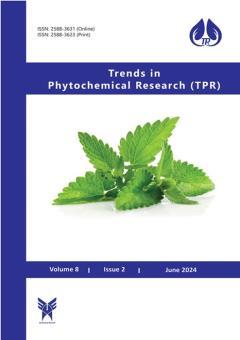-
-
-
Open Access Article
1 - Genetic variability of agronomic traits and biodiversity in the genus Ocimum
Rajendra P. Patel Rakshapal Singh Raj Kishori Lal Pankhuri Gupta Anju Kesarwani Nitu Goyal -
Open Access Article
2 - Quantification of ursolic acid, correlations and contribution by other traits towards accumulation of ursolic acid in six Ocimum species
Raj Kishori Lal Smita Singh Pankhuri Gupta Sunita Dhawan Sougata Sarkar Ram Verma
List of Articles Pankhuri Gupta
-
The rights to this website are owned by the Raimag Press Management System.
Copyright © 2021-2024


